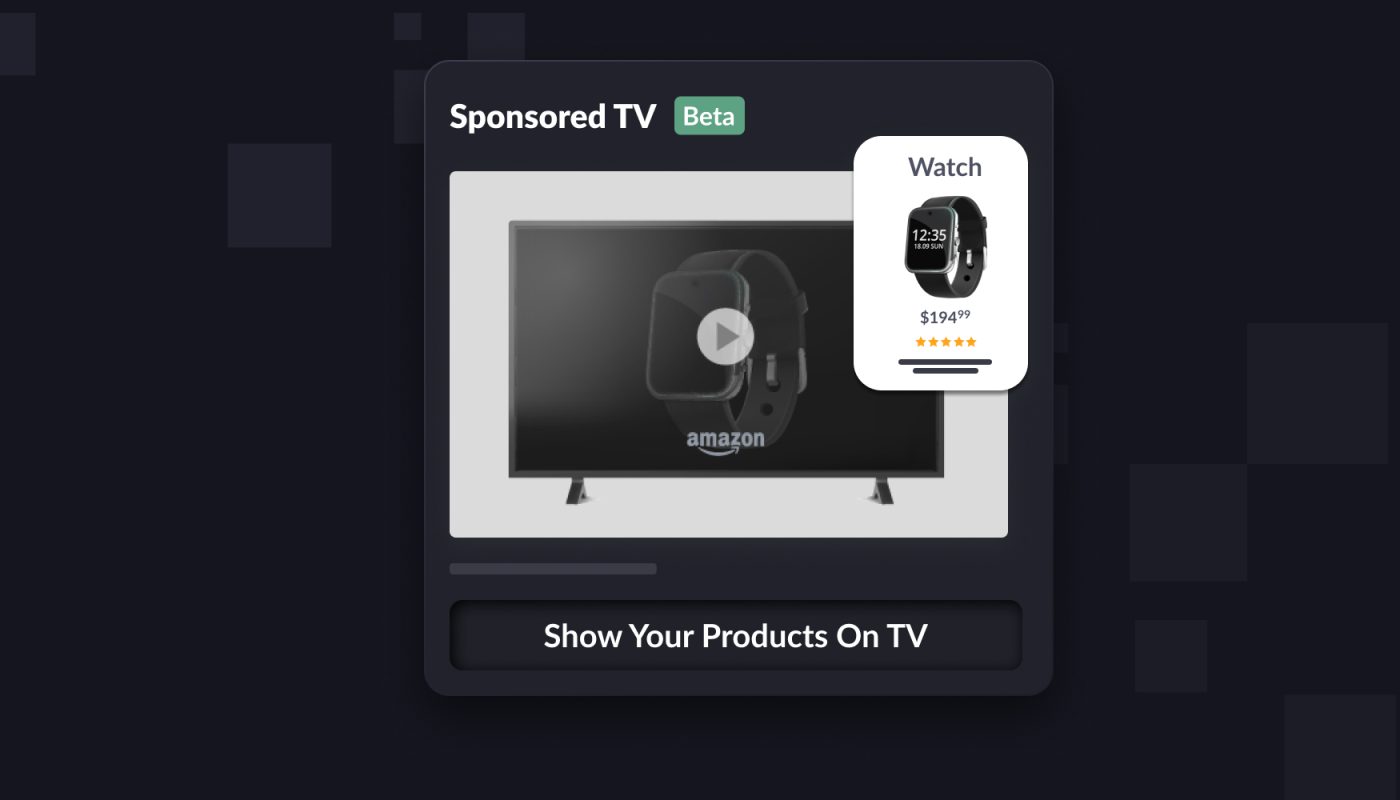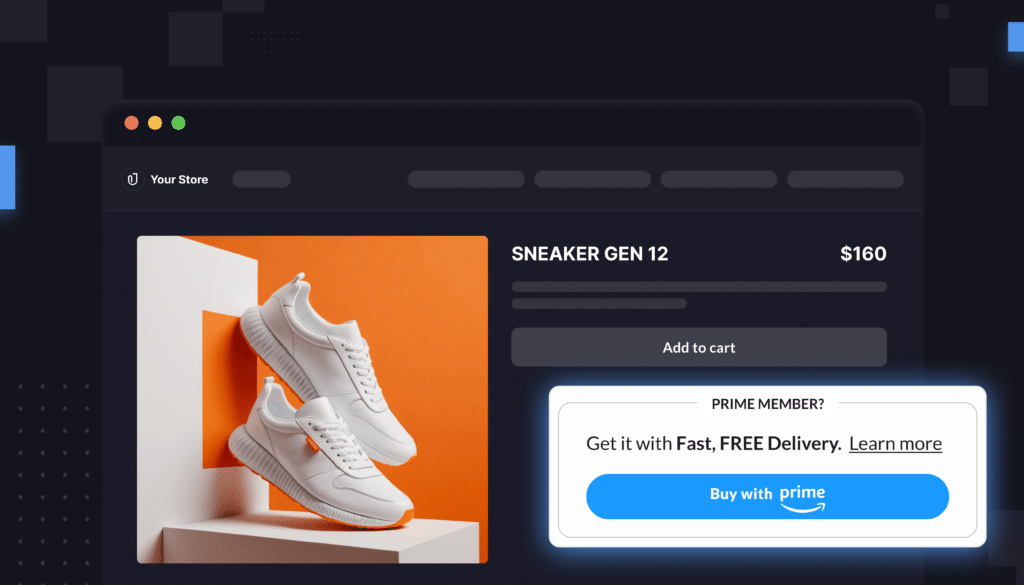One of the big takeaways from unBoxed 2023 is that Amazon is trying to make the upper funnel more accessible—especially through streaming TV.
You probably already know that Amazon is bringing ads to Prime Video in 2024. But one of the most eye-catching announcements from unBoxed was focused on bringing streaming TV ads to all brands, period.
Amazon released Sponsored TV, a type of sponsored ad that, like Sponsored Products, Sponsored Brands, and Sponsored Display, requires no minimum spend. It’s also accessible through the Ad Console.
With Sponsored TV, your ads can appear on:
- Freevee
- Twitch
- Amazon Fire TV apps
Until now, Amazon only offered one way for brands to get on TV—through DSP. The difference is, DSP requires a minimum ad spend of tens of thousands of dollars, unless you work with an agency.
Sponsored TV has no such requirements. That means smaller brands are suddenly going to start showing up on streaming TV.
Amazon thinks this announcement is a big deal.
“Sponsored TV, we believe, is a critical element of brand building strategy as a whole,” Ruslana Zbagerska, VP of Technology and Product Development Amazon Ads, told us in our recent Intentwise Connect podcast. With Sponsored TV, “we are democratizing that opportunity.”
In other words: The top of the sales funnel—those pure awareness marketing plays—is no longer going to be the domain of big brands alone.
Wait, how do you create a TV ad?
Let’s say you’ve never advertised on TV before. You might be thinking: Isn’t it expensive to produce a TV spot?
Indeed, TV ads are tricky, especially for brands without a lot of production budget. If you don’t have the budget to hire your own team, Amazon gives brands the option to use Amazon Ads Creative Services to build a video ad.
The one caveat: As The Information reported, Amazon will only make you a video ad if you commit to spending $15k+ on Sponsored TV.
Another thing to keep in mind while crafting your TV ads: Be sure to insert a call to action. Amazon’s Sponsored TV ads allow you to append a QR code to your ad. Customers can scan it to visit your product page directly.
Are there downsides to Sponsored TV?
We are currently evaluating the differences between this new Sponsored TV offering and DSP streaming TV campaigns.
However, there is certainly a trade off with Sponsored TV. In exchange for increased access to the upper funnel, you don’t get the same granular targeting as you would on DSP.
DSP lets you target ads to shoppers based on products they viewed but didn’t purchase, lookalikes of your existing customers, or custom audiences you build yourself in AMC, to name a few examples.
Sponsored TV, meanwhile, lets you target based on:
- Lifestyle interests
- In-market categories and subcategories
These are broader targeting categories than what is available through DSP. While these audiences are still great for awareness-building, Sponsored TV sacrifices some of the specificity of DSP ads.
Attribution also is limited to a few metrics. With Sponsored TV, you’ll be able to measure your performance based on impressions, ad-attributed brand searches, and product detail page views.
That is not as specific as DSP, which lets you measure which of your ad viewers, for example, eventually purchased from you.
What else to know about Sponsored TV?
Here are a few other key points to keep in mind when you start experimenting with Sponsored TV:
Allocate enough budget. While there are no minimum budget requirements, you do need to be ready to spend. To ensure your campaign is able to spend enough to be a successful test, we generally recommend you start with daily budgets of at least $100.
Prepare for a CPM system. Sponsored Ads generally use a cost per click (CPC) payment model, albeit with some exceptions. That means you pay every time someone clicks an ad.
However, Sponsored TV uses a CPM system, which means you pay per thousand impressions. In other words, with Sponsored TV, you’re paying every time your ad is shown, whether or not a click happens.
Sponsored TV is available via API. You don’t need to create and monitor Sponsored TV ads through the Ad Console.
If you work with an API partner, you will be able to run and track Sponsored TV campaigns through an easy-to-use platform like Intentwise.
Connecting Amazon’s full-funnel ads strategy
Big picture, Sponsored TV is all part of Amazon’s broader upper-funnel strategy.
It was the talk of unBoxed: Major brands can advertise on Prime Video or on a live sporting event like Thursday Night Football, while smaller brands can buy an ad on Freevee.
Then, as shoppers move further down the funnel, brands of all sizes can re-target them with more Sponsored Products ads.
The rise of Amazon’s full-funnel ad strategy begs the question: How do you measure the impact of all these ads together? And how do you attribute conversions to a specific series of ads, rather than just the last touch?
The answer is Amazon Marketing Cloud, which is the only way to unlock multi-touch attribution on Amazon.
With AMC, see how your Sponsored TV ad performed in tandem with your Sponsored Products ad, and assign equal credit to every touchpoint, not just the last click.
As Amazon continues to push brands to embrace a full-funnel ad strategy, AMC is going to become more essential.
It’s the best and only way to connect the dots between the different ads in your funnel. And at Intentwise, of course, we have the only platform out there that lets you write and schedule queries at scale, and easily graph the results.








